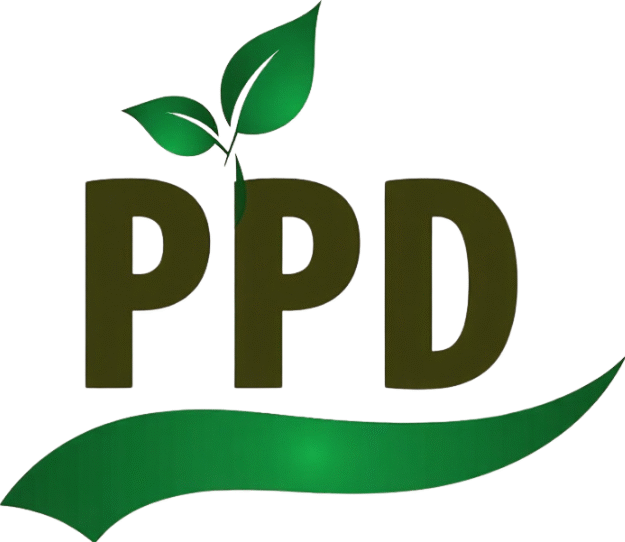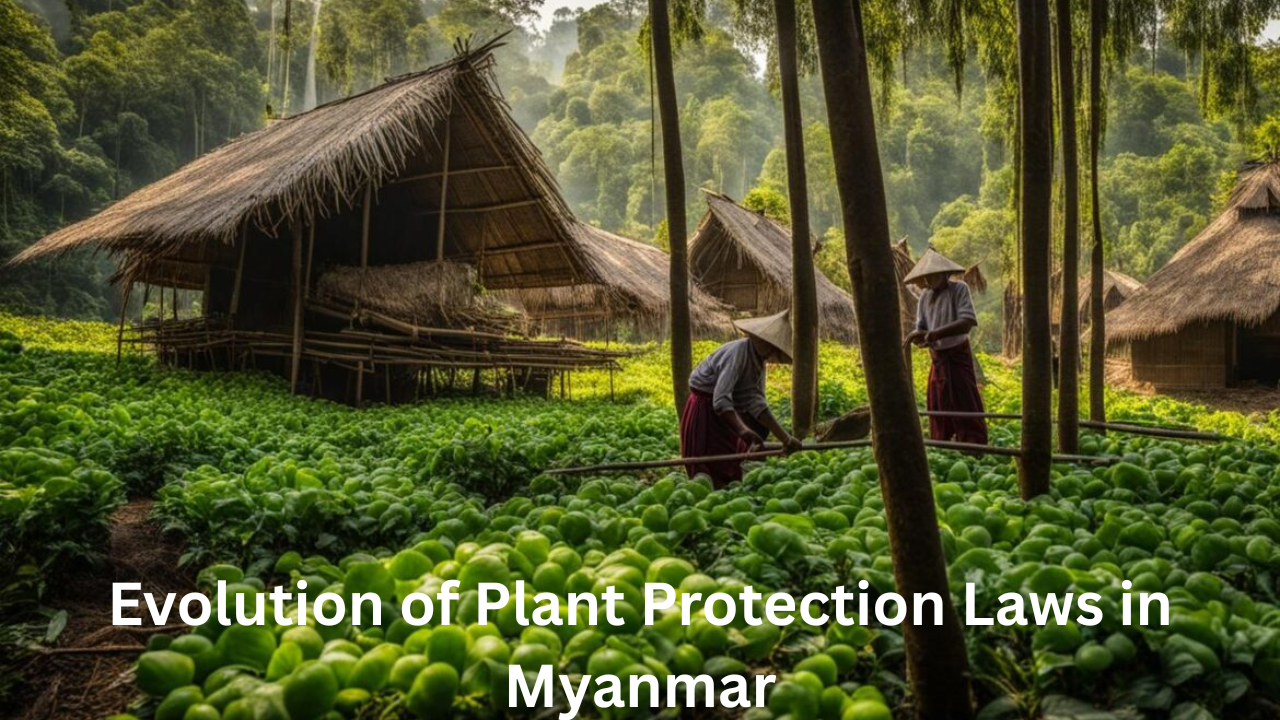
Plant protection is a fundamental pillar of agricultural sustainability and trade security. In Myanmar, the legal framework governing plant protection has gradually evolved in response to growing pest threats, international trade requirements, and environmental concerns. This evolution reflects the country’s increasing commitment to biosecurity, safe agricultural practices, and global compliance. This article explores the historical trajectory, key amendments, current legal structures, and future prospects of Myanmar’s plant protection laws.
Historical Context: Traditional Practices to Legal Frameworks
For centuries, Myanmar’s farmers relied on traditional knowledge and community practices to manage pests and diseases. However, with the expansion of commercial agriculture and globalization of trade, the need for formal legal mechanisms became evident.
Key Developments in Early Years:
- Pre-independence era: Crop protection was largely informal and based on customary practices.
- Post-1948 independence: Initial steps were taken by the Ministry of Agriculture to regulate plant inputs and pest control.
- 1970s–1980s: Increased use of synthetic pesticides led to concerns about misuse and prompted regulatory action.
Major Milestones in the Evolution of Plant Protection Laws
The legal journey of plant protection in Myanmar has been shaped by both domestic agricultural priorities and international obligations.
1. Plant Pest Quarantine Law (1993)
This was the first comprehensive plant protection law in Myanmar, enacted to:
- Prevent the introduction and spread of quarantine pests.
- Establish quarantine inspection points at borders.
- Authorize the Plant Protection Division to conduct inspections and enforce measures.
- Introduce penalties for non-compliance.
It was a landmark move aligning Myanmar’s system with global biosecurity norms.
2. Pesticide Law (1990, Amended in 2016)
Though not exclusively a plant protection law, the Pesticide Law plays a crucial role by regulating:
- Registration, import, and distribution of pesticides.
- Safe handling and use by farmers and traders.
- The promotion of Integrated Pest Management (IPM) practices.
The 2016 amendment enhanced compliance measures, introduced stricter penalties, and encouraged environmentally friendly pest control.
3. Alignment with International Standards
Myanmar joined the International Plant Protection Convention (IPPC) and began adopting international phytosanitary measures. This led to:
- Implementation of Pest Risk Analysis (PRA) for imports and exports.
- Recognition of pest-free areas.
- Development of National Plant Protection Organization (NPPO) responsibilities under the DOA.
4. Recent Revisions and Drafts
In the 2020s, the Ministry of Agriculture, Livestock and Irrigation (MOALI) initiated efforts to:
- Revise outdated laws in line with World Trade Organization (WTO) SPS Agreement.
- Strengthen enforcement mechanisms for invasive species.
- Introduce digital phytosanitary certification systems.
Key Provisions of Current Plant Protection Legal Framework
Myanmar’s current legal system for plant protection revolves around several core components:
| Provision | Function |
|---|---|
| Quarantine Measures | Prevent entry/spread of harmful pests via imports or exports |
| Inspection Authority | Authorizes DOA officers to inspect, hold, or destroy infested goods |
| Pest Risk Analysis (PRA) | Scientific assessment before plant imports/exports |
| Pesticide Use Regulation | Ensures safe and legal use of agrochemicals |
| Biosecurity Emergency Response | Enables fast action against invasive species outbreaks |
| Penalties for Non-Compliance | Fines, license suspensions, or legal prosecution |
Current Institutional Setup for Implementation
The enforcement of plant protection laws is led by the Department of Agriculture (DOA) under MOALI. The key actors include:
- Plant Protection Division (PPD): Main technical body for pest control and quarantine.
- Plant Quarantine Section (PQS): Operational unit for border inspections and certifications.
- Regional Agriculture Offices: Implement laws at the township and village levels.
- Customs Department: Collaborates for border enforcement.
- Private Sector Registrants: Must comply with licensing and regulatory standards for pesticides.
Achievements and Gaps in Implementation
Achievements:
- Reduction in illegal pesticide use through education and enforcement.
- Improved capacity in border quarantine stations.
- Successful implementation of emergency actions against pests like Fall Armyworm.
Gaps:
- Limited Infrastructure: Insufficient diagnostic labs and equipment at local levels.
- Human Resource Challenges: Need for more trained inspectors and legal personnel.
- Enforcement Weaknesses: Gaps in monitoring of imported planting materials.
- Outdated Provisions: Some legal clauses still need revision to match global standards.
Future Directions for Legal Reform
Myanmar’s plant protection legal system is moving toward a more integrated and adaptive framework. Proposed reforms include:
- Updating the 1993 Plant Pest Quarantine Law with modern definitions and digital processes.
- Strengthening biosafety and environmental risk assessment clauses.
- Introducing Integrated Plant Biosecurity Law, combining pest control, quarantine, pesticide use, and emergency response.
- Enhancing farmer rights and grievance mechanisms related to crop protection.
Overview Table: Key Laws and Functions in Plant Protection
| Law / Regulation | Year Introduced | Primary Focus | Latest Amendment |
|---|---|---|---|
| Plant Pest Quarantine Law | 1993 | Quarantine, border protection | Ongoing revisions |
| Pesticide Law | 1990 | Safe pesticide use | 2016 |
| International Commitments (IPPC) | 1998 (joined) | Global phytosanitary compliance | Continuing |
| PRA Guidelines | 2015 (initiated) | Scientific pest risk assessment | Ongoing |
| Draft Biosecurity Law | In process | Integrated plant protection approach | TBD |
Conclusion
The evolution of Myanmar’s plant protection laws reflects a journey from traditional pest control to a science-based, globally aligned legal framework. While much progress has been made through foundational laws like the Plant Pest Quarantine Law and Pesticide Law, continued reforms are needed to strengthen enforcement, adapt to new threats, and integrate digital tools. As Myanmar advances its legal architecture, it positions itself better to defend its agriculture, secure trade, and ensure food safety in the face of rising global biosecurity challenges.
Top 3 One-Line FAQs
Q1: When was Myanmar’s first plant protection law enacted?
A: The Plant Pest Quarantine Law was introduced in 1993 to regulate pest-related border controls.
Q2: How does Myanmar regulate pesticides?
A: Through the Pesticide Law (1990, amended 2016), which governs registration, distribution, and safe usage.
Q3: What international standards guide Myanmar’s plant protection laws?
A: Myanmar aligns with the IPPC and WTO-SPS standards for plant health and trade safety.

